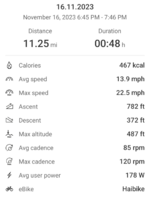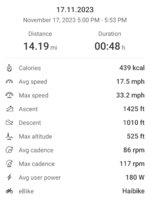Ebikelife72
Active Member
- Region
- USA
I rode a Vado 3.0 IGH today and was quite impressed. I’m a huge fan of the Vado 4 and certainly prefer it as it’s a class 3 and has very easy speed. I was surprised at how strong of a hill climber the 3 IGH was with its 50nm motor. I ride my Tero X 5 in the stock eco setting pretty exclusively. How many nm’s am I using in that setting? If it’s similar or less than the 3.0 in eco that might explain why I’m impressed. The 50nm seemed to be plenty for me. I’ve been riding my wife’s Vado 4 this week while my Tero is in the shop. Other than it being a medium frame and I require an XL it’s been quite fun. The 4 at the current price is the best value out there.

